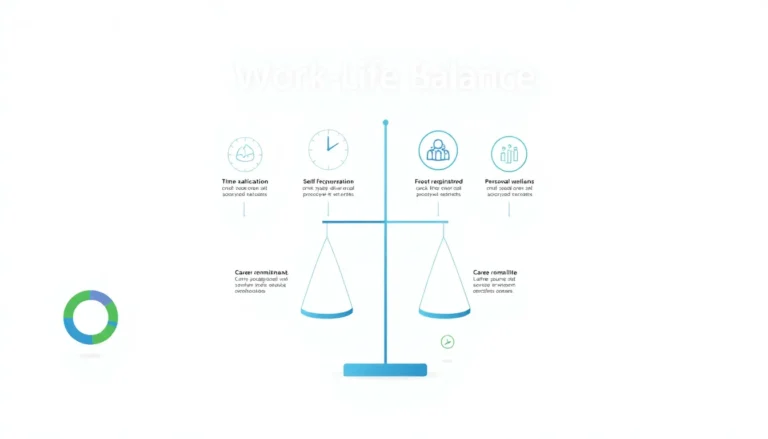Table of Contents
ToggleIn a world buzzing with chatter, wouldn’t it be refreshing to communicate without uttering a single word? Learning sign language opens up a vibrant avenue of expression that’s not only practical but also a whole lot of fun. Imagine impressing friends with your newfound skills while secretly feeling like a superhero who can converse in a unique language.
Overview of Learning Sign Language Apps
Learning sign language apps offer a convenient way to acquire this unique form of communication. Various apps provide comprehensive lessons that cover vocabulary, grammar, and conversational skills. Many of these resources incorporate videos that demonstrate signs in action, promoting better understanding.
Several popular apps feature interactive elements, enhancing user engagement. Users can practice fingerspelling, watch tutorials, and even engage with quizzes. These activities reinforce learning, making the process enjoyable and effective.
Different apps cater to various levels, from beginners to advanced learners. Starting with basic signs and progressing to more complex phrases provides a structured learning path. App users commonly appreciate the flexibility of learning at their own pace, fitting practice into their daily schedules.
Audio features in some applications offer pronunciation guides for integrating spoken language. Incorporating this aspect expands communication skills and boosts confidence. Peer interaction through community forums allows learners to ask questions and share experiences.
Many apps also target specific needs, such as learning sign language for travel or professional settings. Contextualizing signs in real-life scenarios helps users apply their knowledge effectively. Popularity rankings frequently identify top-rated apps, based on user feedback and educational effectiveness.
Incorporating gamification elements, some apps motivate users to compete with friends or complete challenges. Progress tracking within these applications keeps learners aware of their advancement. Ultimately, using learning sign language apps can enhance one’s ability to communicate and connect with others in meaningful ways.
Key Features to Look For

Selecting a learning sign language app involves examining features that enhance the educational experience. Essential elements significantly contribute to effective learning.
User-Friendly Interface
An intuitive user interface promotes engagement and ease of navigation. Users find it easier to access lessons with minimal distractions. Clear layouts and straightforward instruction facilitate seamless learning. Search functions should enable quick access to specific signs and lessons. Visual elements enhance user experience, making it enjoyable to learn. Overall, a user-friendly design increases motivation and retention rates.
Comprehensive Sign Language Dictionary
A robust sign language dictionary distinguishes effective learning apps. Such dictionaries provide extensive vocabulary, covering everyday phrases and specialized terminology. Users benefit from features allowing video demonstrations of signs. Instant access to definitions and context ensures better understanding. Accessibility to multiple sign languages, like ASL and BSL, further enhances usability. Regular updates keep the dictionary relevant and comprehensive. Thus, users gain valuable tools for building their communication skills.
Top Learning Sign Language Apps Reviewed
The following apps represent some of the best options for learning sign language effectively.
App 1: Overview and Features
SignSchool offers a robust platform for learners. Users can explore video tutorials featuring native signers, which enhances comprehension. Its interactive interface supports various learning methods, including practice sessions and real-time feedback. This app features an extensive vocabulary section, with over 2,500 unique signs. Users can track their progress through easy-to-read metrics and engage with the community via forums. SignSchool also includes a community-driven dictionary, ensuring content stays current and relevant to learner needs.
App 2: Overview and Features
The ASL App focuses on American Sign Language with an emphasis on conversational skills. Designed by seasoned ASL users, it provides instructional videos demonstrating proper sign techniques. Users can expect daily updates, keeping the content fresh and engaging. This app incorporates quizzes to test knowledge retention, ensuring learners can apply what they’ve absorbed. With its user-friendly interface, individuals can navigate through myriad lessons without frustration. Additionally, the app encourages social interaction via its sharing capabilities, where users can showcase their skills.
App 3: Overview and Features
Signily offers a unique platform designed for texting in sign language. It provides users with a customizable keyboard featuring signs, making communication seamless. Through its animated GIFs and stickers, users can express themselves creatively. The app promotes inclusivity by offering features tailored for both beginners and advanced learners. Users appreciate its straightforward interface, making it easy to switch between sign language and traditional text. Signily also includes a learning section where users can practice signs and learn contextual usage, enhancing overall understanding.
Benefits of Using Sign Language Apps
Learning sign language through apps offers significant advantages. Users can access a diverse range of resources, enhancing their ability to understand and communicate effectively. Numerous apps provide interactive lessons that adapt to varying skill levels, making it easy for beginners and advanced learners to engage with the content.
Convenience marks a primary benefit. Mobile accessibility allows users to practice anytime, whether at home or on the go. Engaging elements like videos and quizzes maintain motivation and interest, promoting steady progress. Features such as audio pronunciation support users in understanding finger-spelling and enhancing their overall communication skills.
Community interaction fosters a sense of belonging. Many apps include forums or social features, allowing learners to connect with others who share similar goals. This interaction encourages practice and exchange of knowledge, improving retention and confidence.
Gamification also plays a crucial role in motivation. Many applications use game-like elements to challenge users and reward progress, reinforcing learning while making it enjoyable. Incorporating achievements and levels can further incentivize regular practice.
Comprehensive dictionaries within these apps enhance vocabulary acquisition. Users can quickly look up signs and access visual representations to grasp meanings. Apps often include a variety of sign languages, like ASL and BSL, catering to diverse user preferences and needs.
Regular updates ensure content remains fresh and relevant. Developers often introduce new features and lessons based on user feedback, optimizing the learning experience. By focusing on these key benefits, learners can gain valuable skills and foster meaningful connections with others.
Challenges and Limitations
Learning sign language through apps presents various challenges and limitations. One major challenge involves the lack of personal interaction. In-person learning offers immediate feedback and nuanced understanding that apps may not replicate. Users sometimes struggle to grasp non-verbal cues, essential in sign language, since apps often lack real-time communication with instructors.
Another limitation pertains to regional variations in sign language. Different countries and even regions within countries use distinct signs. Most apps focus on a single variant, like ASL or BSL, potentially excluding users who need a different dialect. Without resources for multiple variations, users may find themselves unprepared in diverse settings.
Additionally, retention of learned material can pose an issue. Users may find that without consistent practice, signs fade from memory. Some apps offer gamification features to encourage ongoing engagement, yet motivation can wane over time. Self-directed learning often lacks the structure provided in traditional classroom environments.
Content quality varies as well across different apps. Some apps may offer limited vocabulary or outdated signs, which can hinder effective communication. Regular updates are crucial, but not all applications prioritize this aspect. Users should verify that their chosen app updates frequently to ensure they learn timely and relevant signs.
Accessibility can also present challenges. Not all apps are designed with inclusivity in mind. Some users may encounter difficulty navigating platforms that lack a user-friendly interface. Prioritizing apps that offer an intuitive experience enhances overall learning.
Lastly, the cost associated with some apps can be a deterrent. While numerous free options exist, many comprehensive apps require subscriptions or one-time payments. Budget constraints may limit some users from accessing premium features that facilitate effective learning.
Embracing sign language through dedicated apps offers a unique opportunity for personal growth and enhanced communication. These platforms provide flexibility and accessibility that traditional learning methods may lack. With engaging features and interactive content learners can progress at their own pace while building confidence in their skills.
While challenges exist such as limited personal interaction and varying regional signs, the benefits often outweigh the drawbacks. By carefully selecting the right app and committing to regular practice individuals can unlock the power of sign language. Ultimately this journey not only fosters communication but also opens doors to new relationships and experiences.







